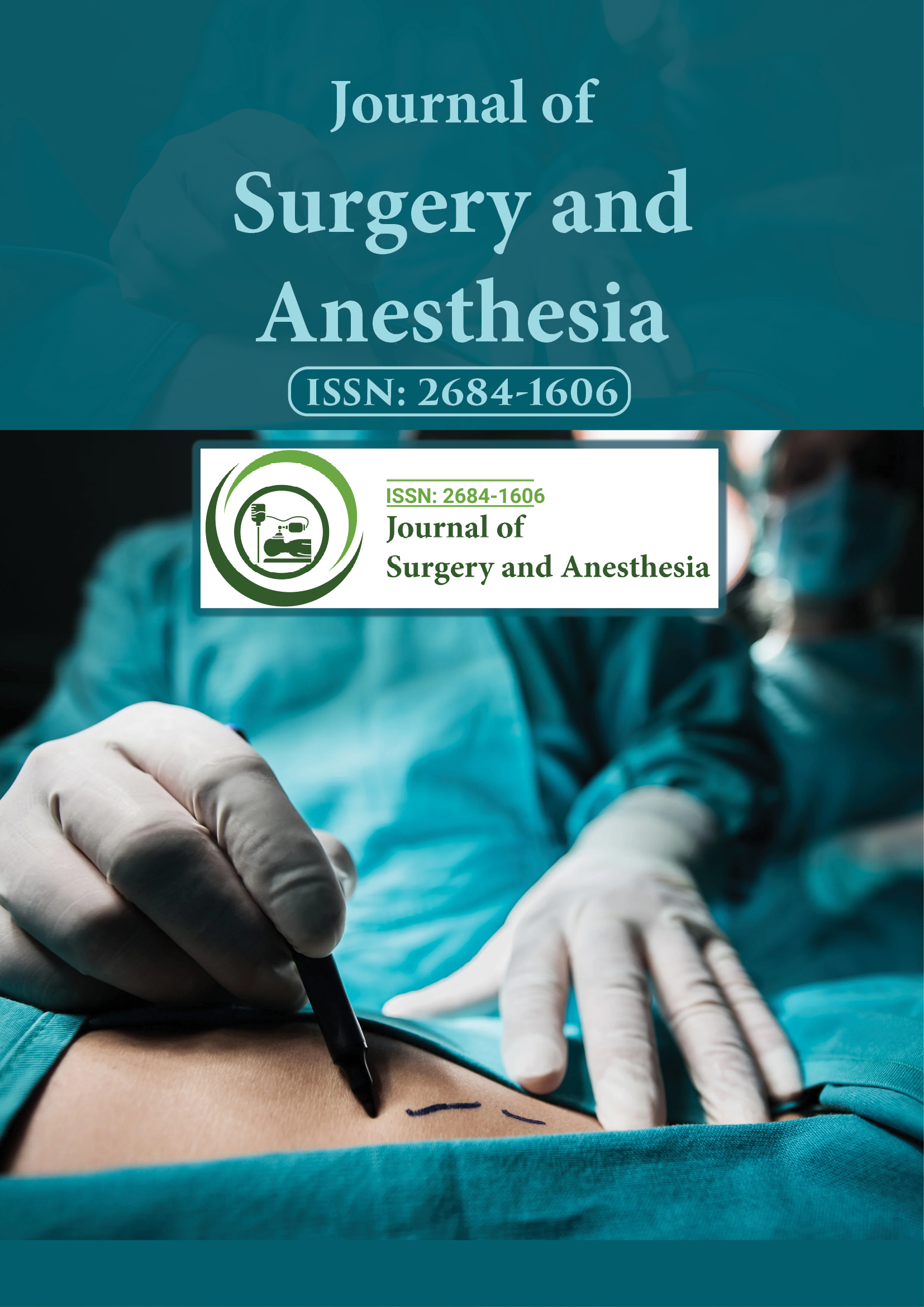Indexed In
- Google Scholar
Useful Links
Share This Page
Journal Flyer

Open Access Journals
- Agri and Aquaculture
- Biochemistry
- Bioinformatics & Systems Biology
- Business & Management
- Chemistry
- Clinical Sciences
- Engineering
- Food & Nutrition
- General Science
- Genetics & Molecular Biology
- Immunology & Microbiology
- Medical Sciences
- Neuroscience & Psychology
- Nursing & Health Care
- Pharmaceutical Sciences
Editorial - (2021) Volume 5, Issue 3
Strategies for Surgeons and Anesthesians during the COVID-19 Pandemic
Shiny Merlyn*Received: 16-Apr-2021 Published: 07-May-2021, DOI: 10.35248/2684-1606.21.5.e147
Description
Although COVID-19 isn’t primarily a surgical disease, it’s significantly affected surgical practice in multiple ways. The COVID-19 pandemic has affected health care in some ways. This has often led to delays of nonurgent surgeries. Although surgeons aren’t frontline health workers, several series of infections emerged from operating theatres. Leading health institutions are providing guidance for hospitals to securely perform surgeries during the pandemic, also as recommendations on when to delay.
Operating Rooms (ORs) are potential risk areas for the transmission of airborne infections due to the presence of a multidisciplinary team and therefore the requirement for high-transmission risk activities, like airway assessment. Additional challenges presented by the COVID- 19 outbreak include the worldwide demand for resources, staff burnout, increased transmission risk, and increased load on our health care systems. Anaesthesiologists are in close contact with the patient’s airway and consequently face a high risk of airborne transmission. Employing a procedure- specific protocol for surgical anaesthesia for COVID-19 patients will help reduce potential crossinfections within the hospital.
Safety measures
Surgeons should prioritize urgent or emergency visits and procedures. Elective and nonurgent admissions should be rescheduled. When entering the ward of low-risk or high-risk patients for daily activities and rounds, primary protection (disposable surgical cap, surgical mask, work uniform and disposable latex gloves or/and disposable isolation clothing if necessary) is required.
When completing routine activities and rounds with confirmed and suspected patient wards, secondary protection (disposable surgical cap, N95 mask, work uniform, disposable medical protective uniform, disposable latex gloves and goggles) should be used. For special procedures like collecting airway samples, tracheal intubation, airway care, and sputum suction, tertiary protection measures (disposable surgical cap, N95 mask, work uniform, disposable medical protective uniform, disposable latex gloves, full-face respiratory protective devices or powered air- purifying respirator) should be implemented as aerosol or spray may occur in airborne infection isolation rooms.
Hospitals should carefully screen patients before surgery to scale back the danger of spreading COVID-19. Patient should be screened for common symptoms like fever, cough and muscle aches and tested for the infection before your surgery. If required patient got to be selfquarantined for a period of your time before your surgery to scale back your risk of exposure to the virus.
Healthcare workers should strictly follow the procedures for putting on and beginning personal protective gear. Sanitation and disinfection got to be implemented consistent with the regionalized zoning management system and patient epidemic classification, and different PPE should be worn consistent with the working area.
Graduate medical education schemes should be conducted which plays a central role in managing the influx of COVID-19 patients while balancing the expected volume of acute and chronic disease admissions in hospitals on a national scale. All residents and staff should be educated in reference to proper PPE use and disposal. N95 masks, face shields, and hand sanitizer were made available to all or any residents and attendings. Additionally, surgical critical care faculty who had served within the COVID isolation ward should be given virtual didactic sessions with reference to contemporary treatment guidelines and management strategies.
Citation: Merlyn S (2021) Strategies for Surgeons and Anesthesians during the COVID-19 Pandemic. J Surg Anesth. 5:e147.
Copyright: © 2021 Merlyn S. This is an open-access article distributed under the terms of the Creative Commons Attribution License, which permits unrestricted use, distribution, and reproduction in any medium, provided the original author and source are credited.
